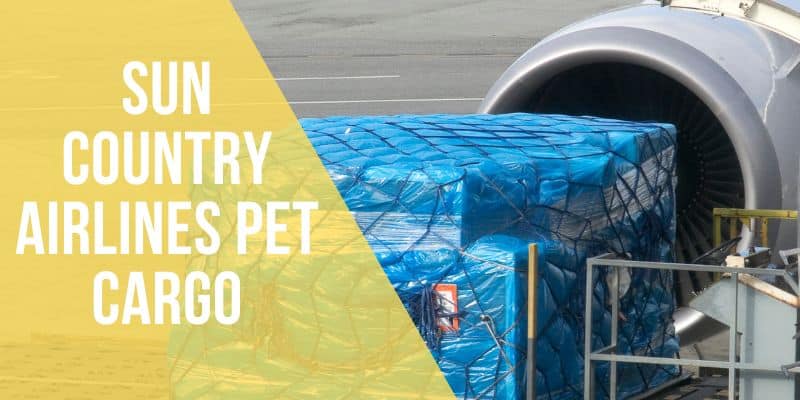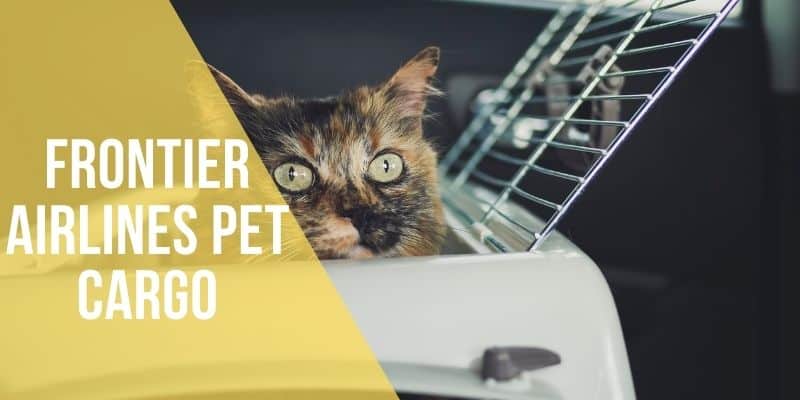You can fly with your furry friends, as checked baggage on the same flights and in the Cargo.
- Pets in Cabin
- As Checked Baggage
- Airlines Cargo Service
Each airline has its guideline for the correct management of the animals it transports. As a shipper or owner, you must also take the appropriate procedures to protect the safety of the pet you are transporting.
Animals in a standard crate can travel in the passenger cabin with their owners. Most airlines recommend no more than one pet per carrier. Animals are not allowed in the cabin on other carriers; they are only allowed in the climate-controlled cargo compartment. These compartments are equally as safe and secure, and the animals are treated with the utmost care.
Pets in cargo
The animal’s kennel will be stored in a separate place from the remainder of the baggage when it is transported into the cargo compartment. The USDA also demands that owners feed and hydrate their animals within four hours after check-in, but not four hours before the trip.
Upon boarding the aircraft, your beloved pet is contained in an IATA-compliant kennel. Most airlines make it a priority for your animal to board and depart from the plane. Your pet’s crate is held in the plane in its allocated place, which is located in the cargo hold.
The lights are subdued during the trip, and even the most agitated pets seem to tone it down as the plane takes off. During the flight, airline personnel does not have access to the cargo compartment, but the animal will be well-cared for during the plane ride.
Household pets flying to a foreign location are placed in a pressurized and temperature-controlled section of the plane’s cargo compartment. Your pet will not be piled on top of the luggage, even while it is in the cargo compartment. Their containers will be affixed to the plane to avoid toppling or disturbance, and they will be placed in a designated compartment.
If the weather at the destination point is excessively hot or cold, the aircraft will not allow the animal to board. These restrictions are in place to protect your pet.
Pets in cabin
Although aircraft policies differ, a pet can usually only travel in the cabin if it is small and lightweight enough to accommodate in a container underneath the row across from its pet parent. If the pet is bigger than that, it will have to fly in the cargo compartment with the baggage and merchandise.
In general, your pet can travel in the cabin if its cage fits beneath the seat across from you. That would be an animal measuring up to 20 pounds. However, the amount of under-seat space varies per plane, and airlines often limit the number of pets allowed each trip – hence why you should double-check with the airline.
There is an additional restriction you need to adhere to while flying via an airline cabin with a pet. Which is a limited selection of the breed of animals which you can carry and on the total of companion animals in the cabin.
A requisite that your pet is not harmful, unthreatening, and odorless and that your pet continues to stay in the container for the duration of the trip. You must be able to provide a recently obtained medical certificate for your animal.
Pet’s meal throughout the flight
Feed your pet a moderate amount six hours before the flight. A full stomach is uncomfortable for a pet to fly on, so ensure your animal has fed but is not yet full. Meals will not be available to your pet throughout the journey due to the risk of choking. Nonetheless, you may bring a tiny pouch of kibble with you to feed your animal during stopovers.
A drink dish will be firmly attached to the entrance of the kennel so that your domestic animal may stay hydrated during the trip and stopovers.
Number of pets allowed per carrier
Unless the pets are young pups or kitties, the IATA does not encourage it for safety precautions.
According to IATA standards, no more than two pups or kittens weighing less than 9kg each can be carried in the same box.
Pets should fly in their own authorized carriers to ensure their safety, and airlines will group animals from the same household in the cargo compartment.
Airways have their policies, so it’s a wise idea to double-check with them before traveling puppies or kittens in the same carrier.
Pets’ age
Before flying with planes, your pet should be at least two months old and properly weaned, according to IATA.
Before flying overseas, several airlines ask that your animal be at least 4 months old.
Reservations
When you buy your ticket, phone the airline’s bookings hotline and inform authorities that you will fly with a pet. In many circumstances, you will be unable to reserve your pet’s reservation online. Reconfirm with the airlines that you will be carrying your pet at least 24-48 hours in advance.
Contact their cargo division to find out how long ahead of time you must check-in.
Airlines hold the authority to decline to accommodate a pet for factors such as disease, animal behavior or inadequate kenneling, or high temperatures at origin, stopover, or target locations.
Tips for Pet Owners
- Prepare your pet for traveling by acclimating it to the crate in which it will be transported. Check to see that the entrance locks firmly.
- Provide your animal a modest quantity of water and a stroll before and after the trip, but no solid food in the six hours leading up to the journey.
- Do not give your pet sedative without first consulting a veterinarian, as well as provide a test dosage before the trip to see how your animal will respond.
- Make a reservation for your pet ahead of time, and enquire about drop-off and pick-up times and locations.
- If possible, book a nonstop ticket to avoid connecting flights and the excessive traffic that comes with a holiday or weekend journey.
- Seek clarification about any particular health restrictions, such as isolation, for international travel.
- Prepare a cage with your identity, location, and contact information, and ensure your animal wears a badge with the same details.
FAQ
How pets are carried in flight?
Domestic pets can be transported as hold luggage or as freight. Even if the traveler has no other luggage, pets will be charged extra and will not be added in the Free Baggage Allowance.
How are pets transported on long-haul flights?
In practice, several airline companies anticipate pets to fly in the plane’s cargo compartment. This does not imply that your animal will lay on others’ luggage throughout the journey. Alternatively, animals are kept to a ventilated and warmed section of the plane for optimal comfort.
Is it safe for pets to travel in cargo?
Cargo is unquestionably the riskier alternative for animal transportation. If that is a possibility, the best technique for any pet to travel is in the cabin as carry-on baggage.
More resource



